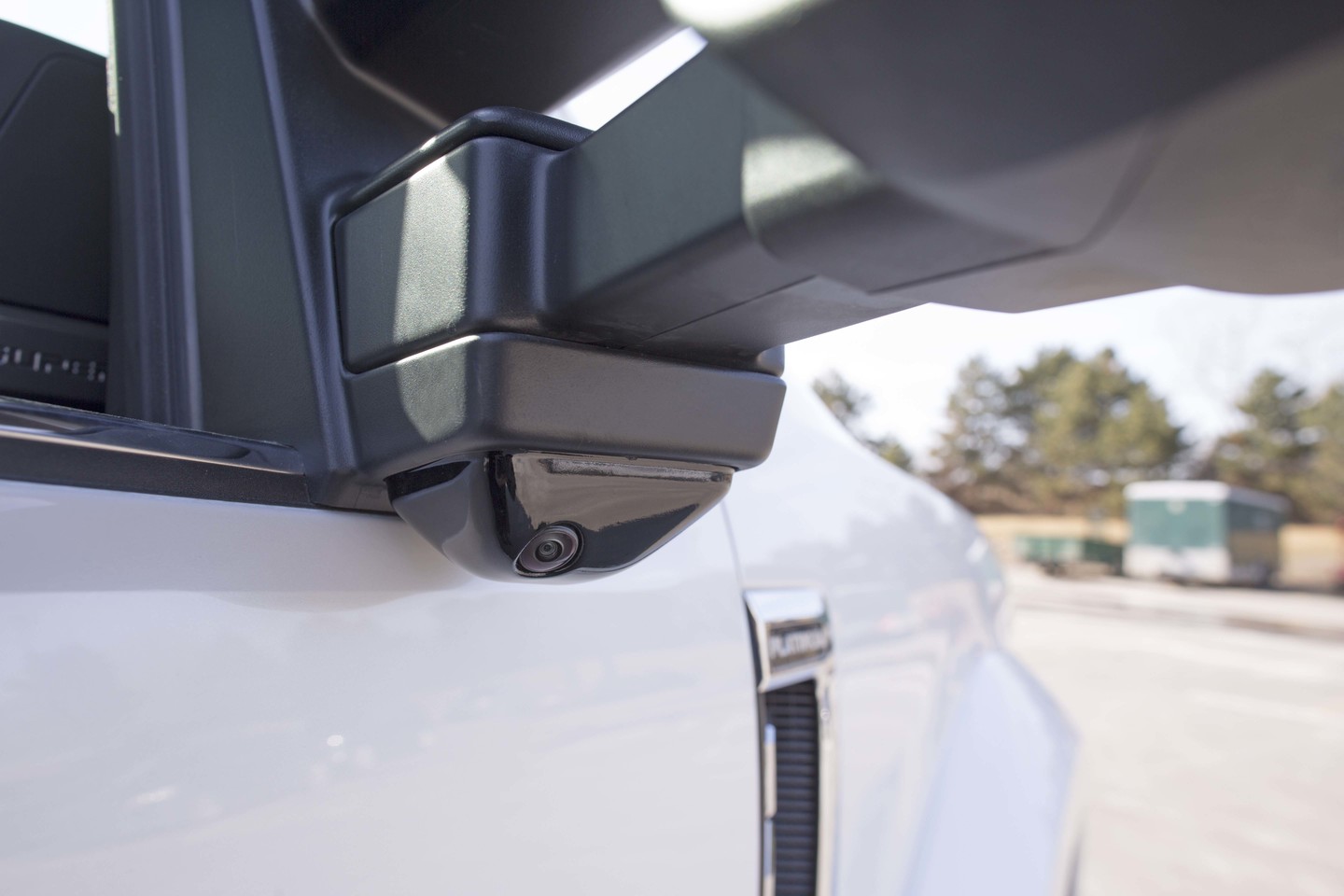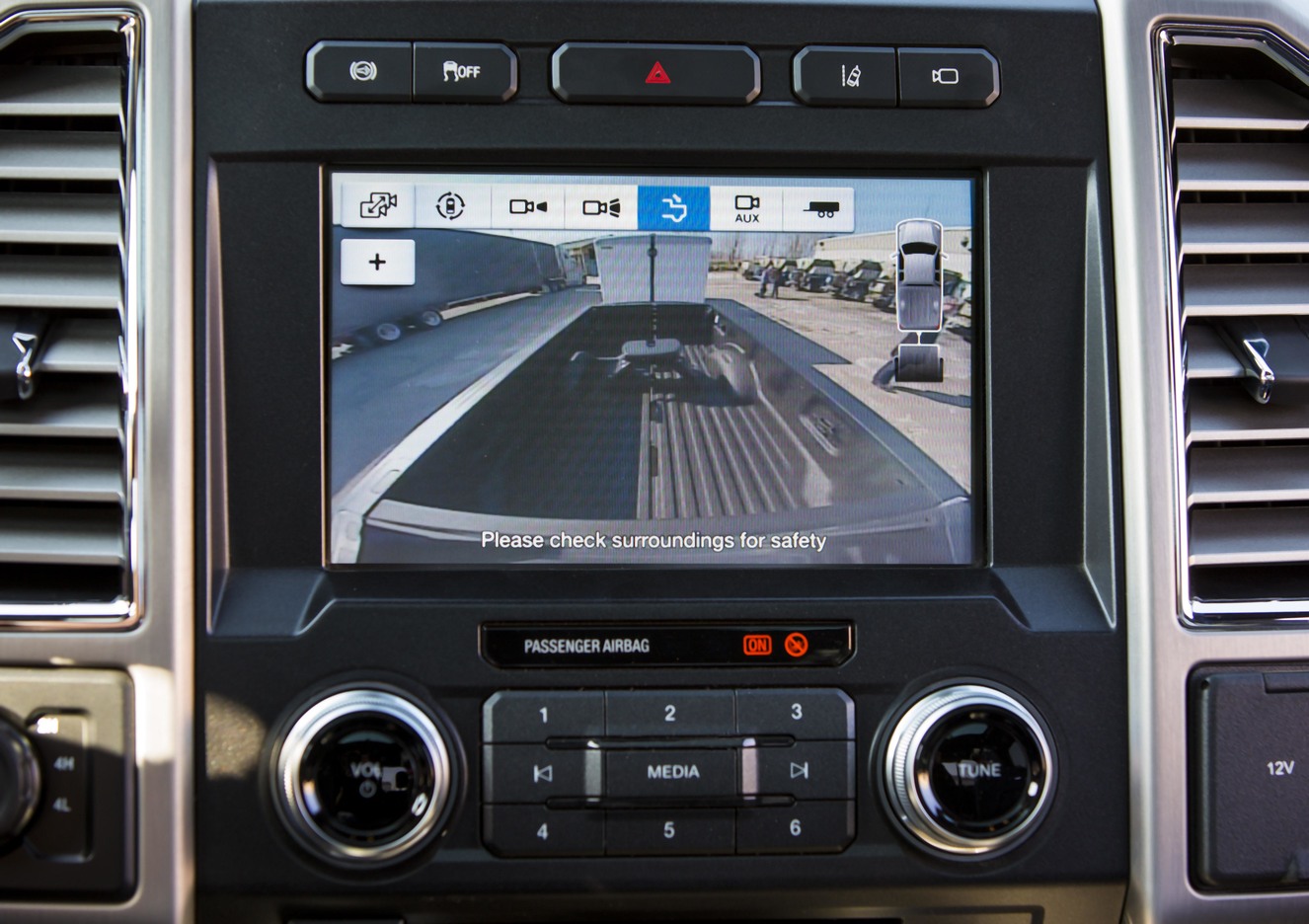A rear-facing camera mounted on the tailgate is the backbone of the system, as it can detect trailer angle most accurately and provide real-time coaching via the truck’s display screen. There are two more cameras mounted on the side mirrors, which help the driver keep tabs on the trailer as its orientation changes. Each feed is routed to a color-coded bird’s eye diagram on the center console.
“Super Duty customers are very proficient when it comes to towing and backing up a trailer; they do it every day,” said Jennifer Shaw, Driver Assistance Supervisor at Ford. “So this system is designed to give them a little bit more — some extended vision. It’s really helpful to have some additional views. ”
Walk around the truck and you’ll find more cameras mounted on the front grille, above the rear-center stop lamp, and near the rear-view mirror inside the cabin. As a factory option, customers can place an additional wired camera to the rear of the trailer for increased visibility.
The 2017 Super Duty goes on sale later this year and will ride on an all-new, full boxed frame made from more the 95-percent high-strength steel. Like the F-150 we tested in Texas, the Super Duty uses a lightweight aluminum body, which cuts up to 350 pounds off its predecessor. Engine choices will be a 6.7-liter diesel V8, a 6.2-liter gasoline V8, and a hulking 6.8-liter gasoline V10.
Editors' Recommendations
- These customized Ford Super Duty trucks have everything you need for adventure
- 2020 Ford F-Series Super Duty Tremor is as unstoppable as an earthquake






